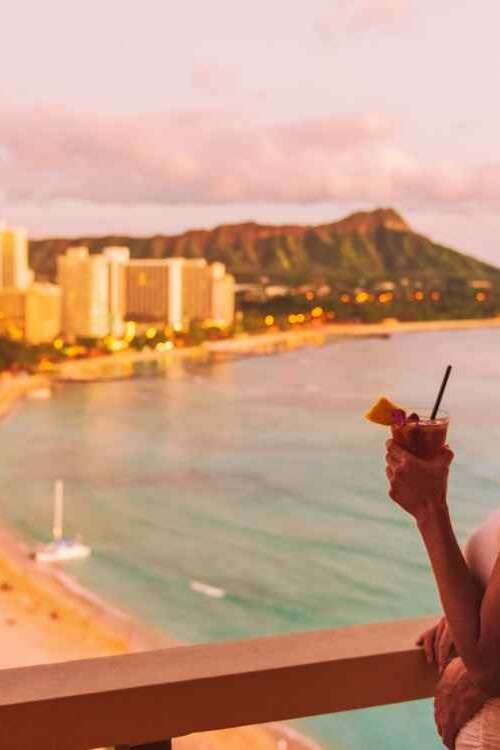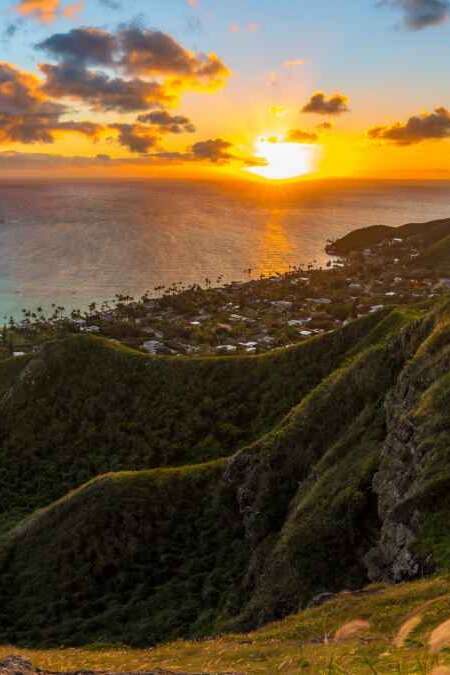Na Mokulua, affectionately referred to as “The Mokes,” represents one of Hawaii’s most illustrious natural gems. Nestled in the turquoise waters of Lanikai Beach, these twin islets beckon adventurers and nature enthusiasts alike with their captivating beauty and rich biodiversity. This article delves into the mesmerizing allure of Na Mokulua, exploring its unique geological formations, fascinating history, and the diverse array of flora and fauna that call these islands home. Join us as we embark on a virtual tour of this Hawaiian paradise.
Highlights
- Ideal for nature lovers, the islands offer a breathtaking backdrop with scenic vistas that make it a perfect spot for photography and relaxation.
- Engage in thrilling water activities such as snorkeling and kayaking, exploring vibrant coral reefs and marine life in the surrounding waters.
- Hiking enthusiasts can embark on scenic trails, enjoy panoramic views of the Pacific Ocean, and discover the unique flora and fauna that call Na Mokulua home.
- Na Mokulua is a haven for wildlife enthusiasts, providing opportunities to observe a variety of seabirds, including the iconic wedge-tailed shearwaters and brown boobies.
- With limited access to the islands, visitors can enjoy a peaceful retreat, making it an ideal destination for those seeking a more secluded and intimate experience.
History
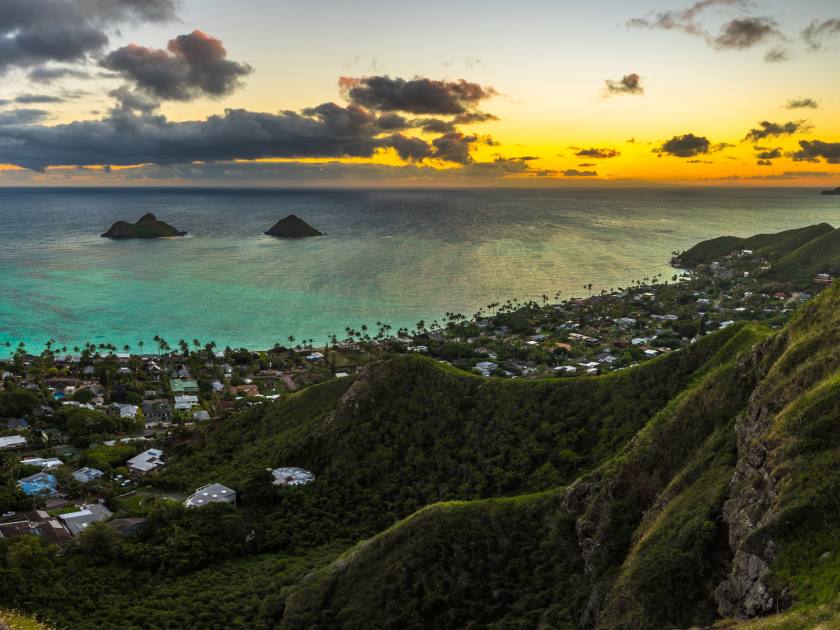
Geological Formation
Na Mokulua or “The Twin Islands” in Hawaiian, are two small islets located off the windward coast of Oahu. Millions of years ago, the geological dance of volcanic activity gave birth to these two distinct islands – Moku Nui, meaning “big island,” and Moku Iki, meaning “small island.” According to oral traditions, the islands were not mere products of natural forces; they were said to be crafted by the gods themselves, embodying a mystical origin that contributes to the islands’ unique aura. Despite their current names, some Native Hawaiian cultural practitioners speculate that these islands might have had unique names lost to the passage of time, absent from Hawaiian-language newspapers or older maps.
Native Hawaiian History
nturies of Native Hawaiian history intertwine with these islands, notably Moku Iki. Used for fishing, bird hunting, and sacred ceremonies, it held significance as a burial ground for chiefs. In Native Hawaiian legends, Na Mokulua, or “The Mokes,” is special, believed to be crafted by gods, lending a mystical aura. These islands weren’t just geological formations; they were vital to Native Hawaiians’ survival and spirituality. Fishermen in outrigger canoes sought sustenance from Na Mokulua, merging daily life with cultural practices.
European Arrival and Changing Landscape
With the arrival of Europeans in the late 18th century, Hawaii experienced significant changes to its landscape. The introduction of goats and rabbits by the newcomers led to the devastation of native plant life. By the early 20th century, the islands were rendered largely barren and even served as target practice grounds for the military. However, a positive shift occurred in the latter half of the 20th century, marked by dedicated conservation efforts. Invasive species were successfully removed, native plants were reintroduced, and the islands underwent a remarkable transformation, once again becoming a flourishing haven for seabirds.
Present-day Na Mokulua
Today, Na Mokulua stands as a captivating destination for modern travelers. However, as part of the Hawaii State Seabird Sanctuary, it is crucial to exercise mindfulness regarding nesting birds and adhere to all posted regulations. While Moku Iki remains off-limits to visitors, Moku Nui has designated landing zones and restricted areas. Noteworthy is the Queen’s Bath, a natural saltwater pool on the backside of Moku Nui, drawing visitors to its inviting waters. Both islands offer not just recreational activities but also serve as vantage points for breathtaking views of the majestic Koolau Mountains and the scenic windward coast of Oahu.
Things to Do
Snorkeling
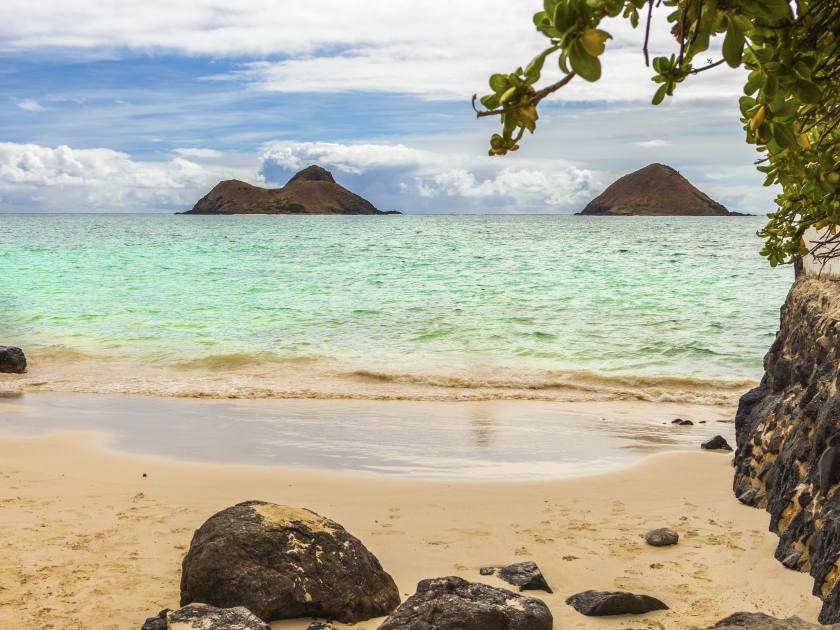
Dive into the crystal-clear turquoise waters surrounding Na Mokulua for a mesmerizing snorkeling experience. Discover vibrant coral reefs teeming with marine life, providing an underwater spectacle that is both awe-inspiring and immersive. Snorkeling on Na Mokulua offers a unique opportunity to witness the colorful diversity of the Pacific Ocean’s aquatic inhabitants.
Kayaking and Paddleboarding
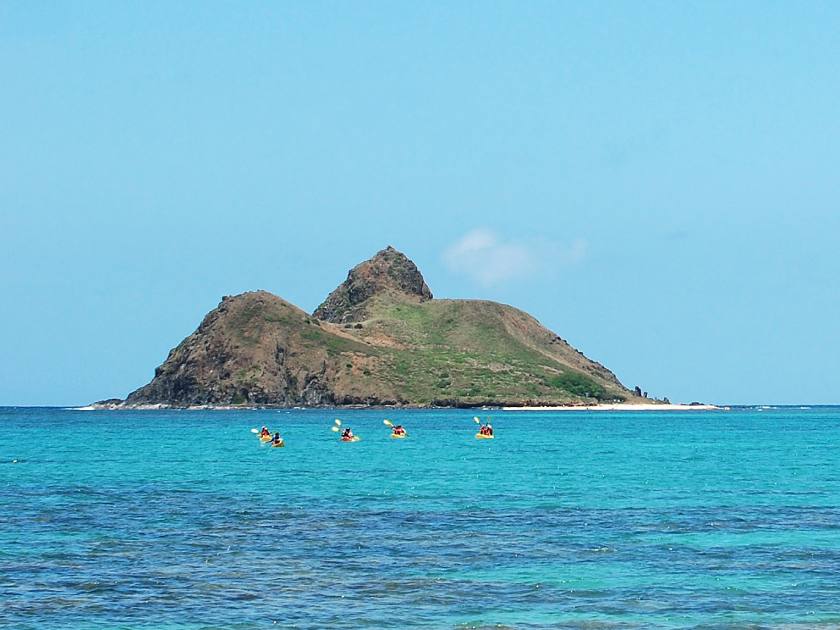
Navigate the gentle waves surrounding the islands with a kayaking expedition. Whether you’re a seasoned paddler or a novice adventurer, kayaking to Na Mokulua provides an intimate connection with the serene beauty of the Pacific. Similarly, stand-up paddleboarding is another popular water activity in the area. The calm and clear waters surrounding the islands provide beginners with a comfortable environment to learn, while the abundant marine life and coral reefs offer more experienced paddleboarders plenty of sights to explore.
Hiking
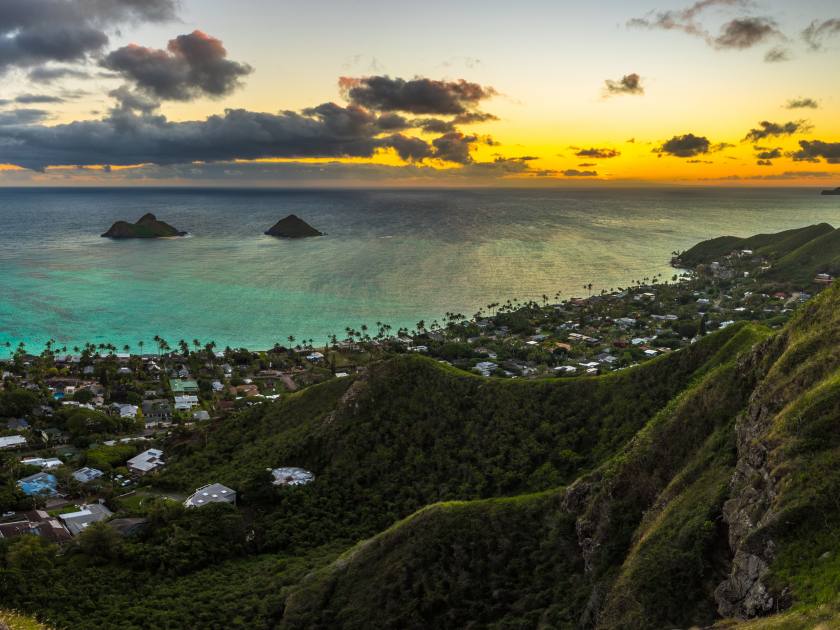
For those with an affinity for exploration on land, the enchanting landscapes of Moku Nui and Moku Iki invite outdoor enthusiasts to explore well-defined trails. Coastal pathways trace the shoreline, revealing stunning views of the Pacific Ocean, where waves rhythmically dance against rugged cliffs. Inland exploration takes hikers into the heart of the islands, surrounded by lush greenery, providing a serene escape and an opportunity to connect with the islands’ natural environment. Elevated vantage points along the trails offer panoramic views of the Koolau Mountains and the windward coast of Oahu, capturing the beauty of Na Mokulua from elevated perspectives. Wildlife encounters add an extra layer to the hike, with seabirds soaring overhead, native plants, and occasional glimpses of marine life, creating a holistic appreciation of the interconnected ecosystems on these twin islands.
Bird Watching
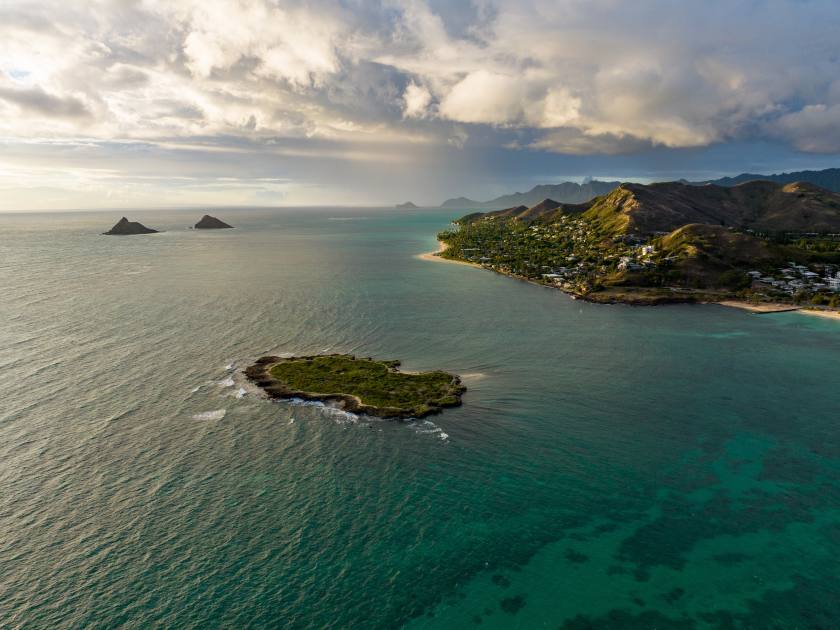
Na Mokulua is a haven for various seabird species, making it an ideal destination for bird watchers. Some of the notable avian inhabitants include the iconic wedge-tailed shearwaters, brown boobies, and other native seabirds. Their natural behaviors and habitats provide bird watchers with ample opportunities to observe and appreciate these magnificent creatures.
Traveler’s Note: Notably, Moku Iki, the smaller islet on the right, is entirely off-limits, prohibiting any visitation. However, Moku Nui is accessible, with the exception that animals are not permitted to avoid disruption to ground-nesting birds. Visitors are restricted to Moku Nui Beach on the southwest corner, while exploration of the island’s interior is strictly prohibited due to conservation efforts. Familiarizing yourself with these guidelines ensures a respectful and responsible experience on these twin islands off the coast of Oahu.
Tips for Travelers
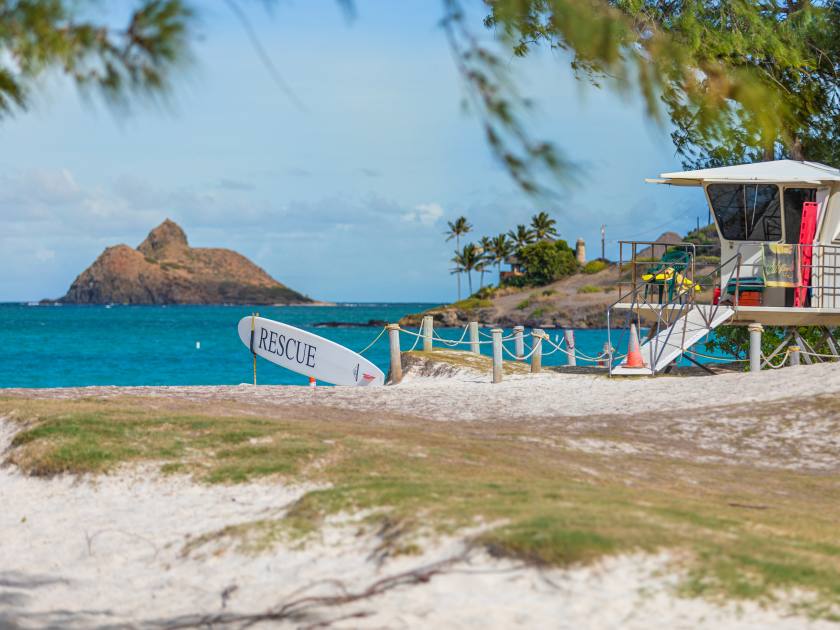
- It’s advisable to pack sun protection, including a hat, sunglasses, and sunscreen, to protect against the intense Hawaiian sun.
- Always carry enough water to stay hydrated, especially during outdoor activities.
- Respect the local flora and fauna. Do not litter and refrain from feeding or disturbing the wildlife.
- Check the weather forecast before setting out for any outdoor activities. Weather conditions can change rapidly.
- Make sure to check and adhere to any regulations or restrictions imposed by local authorities or the management of any parks or recreational areas.
- It’s recommended to wear sturdy shoes if you plan on hiking.
- Local guides are often available for hire. They can provide a wealth of information about the history and ecology of the region.
- Lastly, remember to take plenty of pictures. The natural beauty of Na Mokulua is truly breathtaking.
Best Times to Visit
Discovering the optimal times to explore Na Mokulua is crucial for an enriching experience. For outdoor enthusiasts who enjoy water sports such as kayaking, the summer months from May to October offer calm sea conditions and warm weather. Consider visiting during the early morning or late afternoon to witness the islands’ natural beauty in the soft glow of sunlight. These times not only offer pleasant weather but also enhance the tranquility of your visit. For those interested in photography or hiking, the winter months provide a different kind of beauty with its lush greenery and dynamic waves.
Nearby Attractions
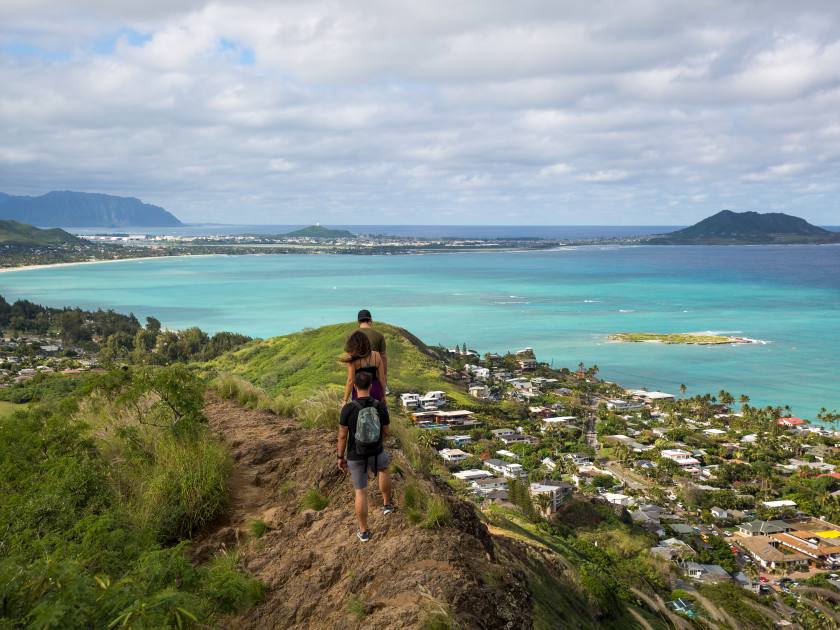
World-renowned Lanikai Beach, with its powdery white sands and azure waters, beckons just a 35-minute drive away. From there, an additional 45-minute kayak journey is required to reach the Mokes. You can indulge in the tranquility of swimming, sunbathing, and water activities, all against the stunning backdrop of the Mokulua Islands. Adjacent to Lanikai Beach, the Lanikai Pillbox Hike offers panoramic views of the Windward Coast and the Mokulua Islands, presenting a historical journey to military pillboxes that overlook the coastal beauty.
A short drive to Kailua Town opens a charming realm of local shops, eateries, and cultural experiences, while the Makapu’u Point Lighthouse Trail, a brief drive away, unveils breathtaking coastal vistas and a touch of history with its historic lighthouse perched along the rugged coastline. Each of these nearby gems harmonizes with the allure of Na Mokulua, creating a diverse and unforgettable Hawaiian escapade.
Frequently Asked Questions (FAQs)
“Na Mokulua” translates to “The Twin Islands” in Hawaiian. These twin islands, Moku Nui and Moku Iki, are situated off the coast of Oahu and hold cultural significance in Native Hawaiian folklore.
Swimming to the Mokes is not recommended due to the distance, strong currents, and potential hazards. It’s advisable to use watercraft like kayaks or paddleboards for a safer and more controlled approach to reaching the islands.
In Hawaiian, “Moku” translates to “island” or “district.” It is a term commonly used in geographical contexts to refer to islands or distinct regions within the Hawaiian archipelago.
Moku Iki, the smaller islet on the right, is designated as off-limits to visitors to preserve its delicate ecosystem and protect the wildlife that inhabits the island. This conservation measure is crucial for safeguarding the breeding and nesting grounds of seabirds and other native species that rely on the uninhabited nature of Moku Iki.
Most visitors reach Na Mokulua by kayak or surfboard. Several rental shops in Kailua offer kayak rentals, as well as guided tours to the islands.
Yes, certain restrictions are in place to protect the fragile ecosystem and bird species on the islands. Visitors are only allowed on the beach area, and it’s prohibited to climb on the cliffs or disturb the bird nests.
How to Get There
By Car
Driving is a convenient way to reach the launch points for accessing Na Mokulua. From Honolulu, take the Pali Highway (Route 61) towards Kailua. Once you reach Kailua, continue on Kailua Road and then turn right onto South Kalaheo Avenue. Follow the road until you reach Kailua Beach Park, where parking is available. You can rent a kayak here and paddle out to Na Mokulua. Remember, the islands are approximately 1 mile off-shore, so ensure you’re prepared for the journey.
By Bus
TheBus, Honolulu’s public transit system, also services the Kailua area. From Ala Moana Center in Honolulu, you can take Bus 57 (Kailua-Kaneohe), which stops at Kailua Beach Center. From there, it’s a short walk to the beach where you can rent a kayak to reach the islands. Make sure to check the bus schedule ahead of time, as the routes may have different frequencies depending on the day of the week.
The Magic of Na Mokulua Awaits Your Discovery!
Your exploration of Na Mokulua will not only leave you enchanted but will also deepen your connection with the natural world. As you navigate the crystal-clear waters and set foot on the pristine shores, let the whispers of the Pacific Ocean and the echoes of ancient Hawaiian tales guide your exploration. Remember, each footprint we leave behind has an impact, so tread lightly, respect the local environment, and help preserve this magical place for generations to come. So venture out, paddle through the glistening waters, witness the flight of the rare seabirds, and let the tranquil ambiance soothe your senses.


